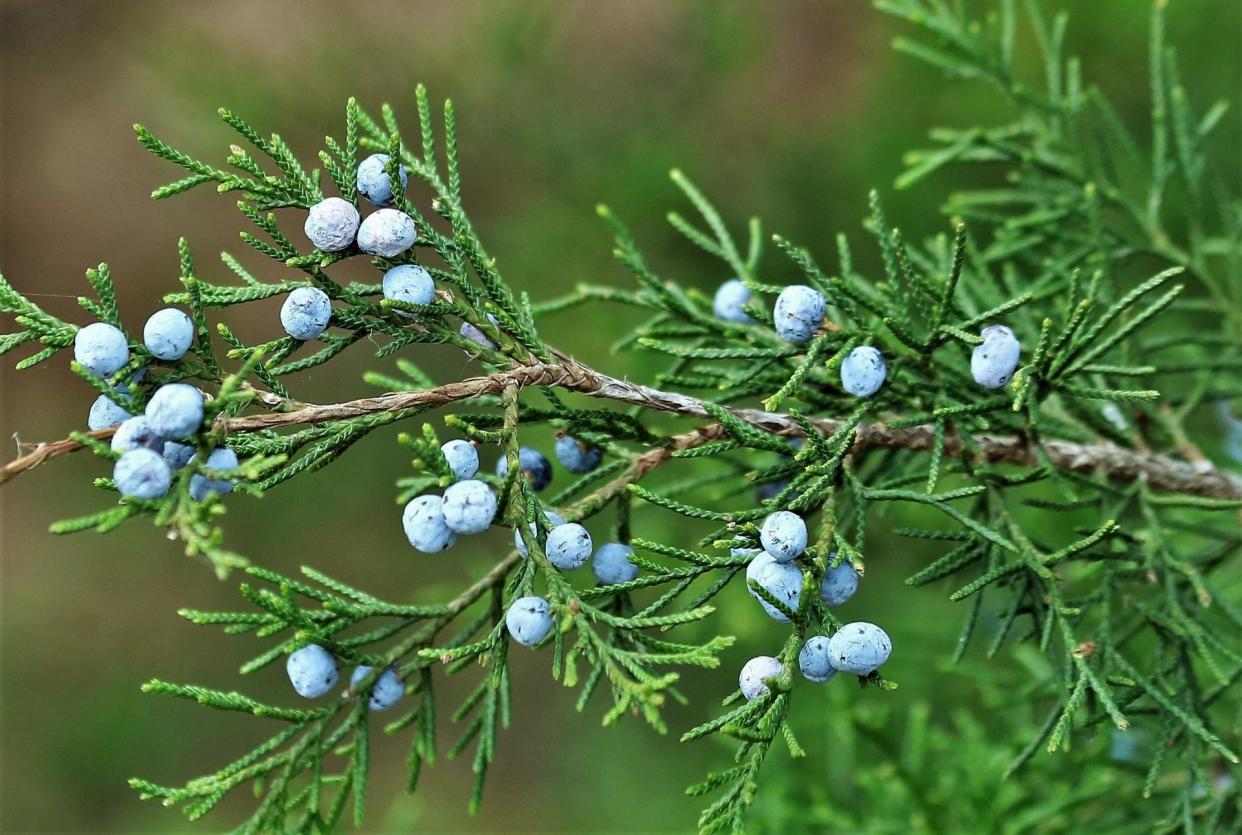CHARLES REYNOLDS: Some trees not made for shade

Stepping out of the Florida sun into the welcoming shade of an oak is like entering a different world. Shade is indeed wonderful, but some of our most attractive trees aren’t built for shade: Unlike most species, they retain their lowermost branches for decades.
Our native Eastern red cedar is a lovely example. The species (Juniperus virginiana, aka J. silicicola) grows at a slow-to-moderate pace on sunny, well-drained sites, eventually reaching 25 to 60 feet. A handsome tree, Eastern red cedar is particularly notable for its low-branching growth habit, a characteristic that makes it a popular screening plant.
Also wonderful as a specimen, this conifer is a valuable wildlife plant: Small purple fruit borne by female trees are relished by small mammals and birds, which also find its boughs ideal for sheltering their nests. Eastern red cedar — which once covered thousands of acres in Central Florida — withstands droughts, storms and freezes. Propagation is by seeds and cuttings. If you order seedlings online, be sure they’re bred from Deep South stock.
Vastly different from red cedar, though equally elegant, is Southern magnolia, native from North Carolina to Central Florida. This evergreen tree does, however, share the cedar’s habit of maintaining a skirt of low, sweeping branches. Up to 75 feet tall on moist, sunny sites, Southern magnolia rates as one of our nation’s most outstanding flowering trees, with white fragrant blossoms up to a foot wide in spring and summer.
But even if it never flowered, the tree’s 6-to-12-inch leaves — dark green above, and coppery below — would make it an exceptional landscape subject. Adding allure are cone-like fruit that split to disclose glossy, bright-red seeds. Of course, a tree as potentially large as Southern magnolia requires considerable elbow room, so thought should be given to its installation. Also — among those inclined to find fault — this magnolia is deemed a messy tree because old leaves are constantly falling. Southern magnolia is usually propagated by seeds, with some seedlings flowering within two years, while others may take a decade.
And then there’s bald cypress. Although it doesn’t maintain its lowermost branches throughout life, the tree’s base is often encircled for decades by an impressive border of boughs. A deciduous species that grows rapidly in youth, bald cypress does well in average garden conditions, where it doesn’t develop ‘’knees.’’ Trees are particularly attractive when displaying new growth in spring, and again in autumn, before the leaves fall. Propagate by seeds.
Charles Reynolds, a Winter Haven resident, has an associate’s degree in horticulture and is a member of Garden Writers Association of America. He can be reached at ballroom16@ aol.com
This article originally appeared on The Ledger: Some attractive trees keep lowermost branches

